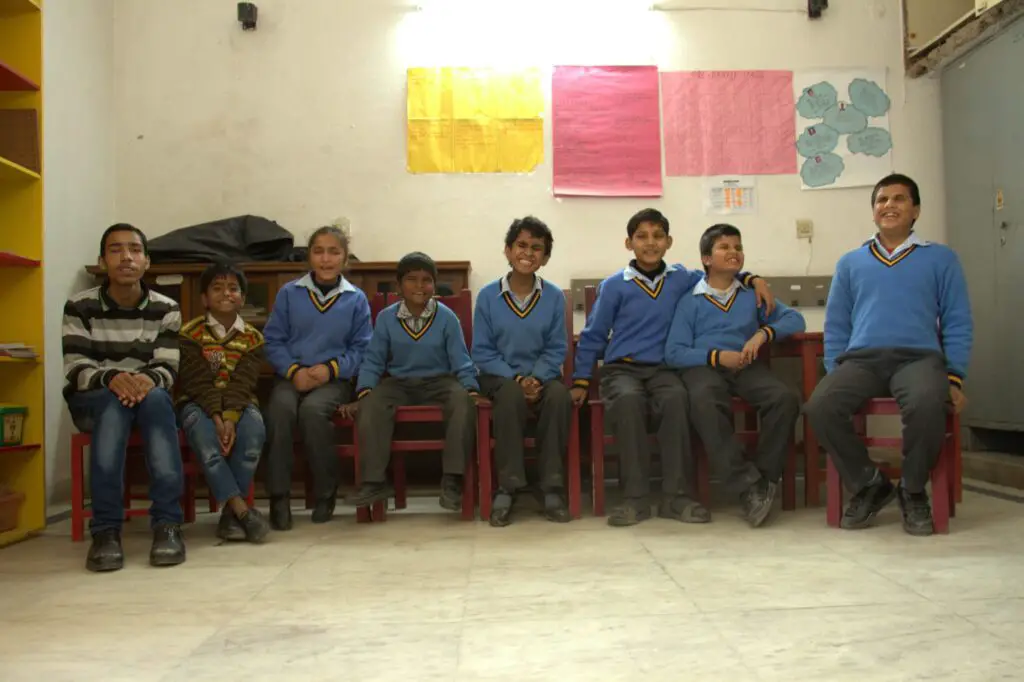Black is Beautiful takes us into the lives of visually impaired children, familiarising us with their world — their daily struggles, ambitions, dreams, fears and a burning hope. A hope that someday, like sighted children, they will be capable of experiencing life through their eyes. There’s desperation, there’s anger in them, which spawns more from the people around them. It’s unfortunate we call them ‘challenged,’ besides all the other pain we inflict on them, knowingly and unknowingly.
They’re just different. And, undoubtedly, brighter and far more capable than us, at various levels. And Black is Beautiful is astounding proof.
There’s so much more to their lives than just the darkness. That’s what the documentary brings to light in its own little, but effective way.
Director Deepak Sharma brings together 11 visually children and trains them in improv for a year. (Improv, or improvisational theatre, is the form of theatre, usually comedy, created spontaneously by the performers. There’s no pre-written script. The performers collaboratively create dialogue, action and characters on the spot).
Recommended: 5 Indian Documentaries Worth Watching On Netflix
The 90-minute documentary was an experiment that began with no script or an idea. The idea came to the director when he attended a workshop back in 2011 at JNU. Antarchakshu is a workshop that aims to raise awareness about disability. “At Antarchakshu, I met a group of visually impaired children from Saksham school. I immediately decided I wanted to teach them improvizational theatre. While teaching them, I saw a unique world unfolding in front of me which had never been heard or seen.
I started to realize that it is us, who have constructed a wall of disability with the visually impaired and levelled them as incapable. But they’re as capable as any of us. I decided to capture every moment that I was spending with them to showcase their abilities to the entire world. The urge of changing perceptions about the differently abled was a major inspiration to make this project. And thus, Black is Beautiful was born,” says director Deepak Sharma.
Some of these kids have no eye vision at all while others have only 5% and are on the brink of completely losing it.
Recommended: Bunkar (2018) Review: Heartwarming Attempt To Rekindle Past Glory
The narrative takes us through their year-long preparation at improv and is interlaced with their personal stories.
The children are at their candid best. And that’s where the beauty of the documentary lies. It’s anything but dark and depressing.
The director doesn’t try to emotionally manipulate the viewers, at least visually, which is usually the case with documentaries like these. (But the background music added to some scenes for effect remains my major grouse). He keeps it light and hopeful, which is primarily aided by our cheerful bunch of 11 little protagonists.
Their lives and desires are as normal as any of us. You could easily identify in them singers, actors and computer engineers of tomorrow.
While the film makes us aware of their everyday struggles, it’s a unique attempt in how we, as a society, can do our bit to support them and contribute to their lives, in whatever little way.
Partly funded through the director’s personal earnings, Black is Beautiful needs to reach out to as many as possible.
The documentary was among the 32 film projects NFDC’s Film Bazaar recommended for Viewing Room in 2015.
The Viewing Room provides a platform for filmmakers to showcase their ideas or completed projects to film programmers, distributors and investors.
Recommended: Watch (Short film): He Took His Skin Off For Me (2014)

